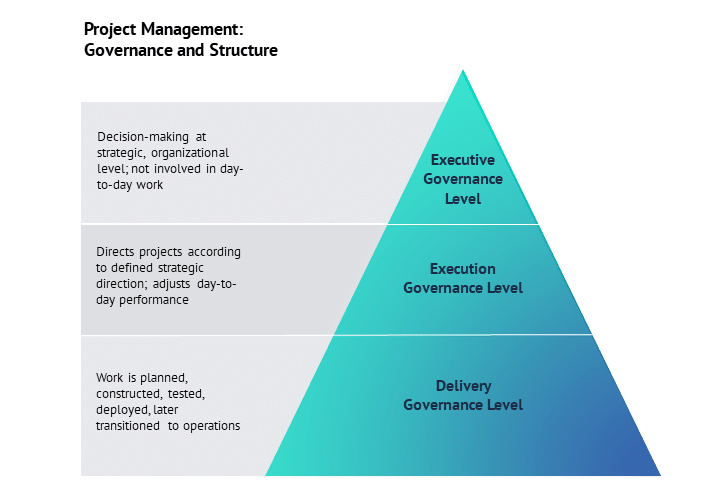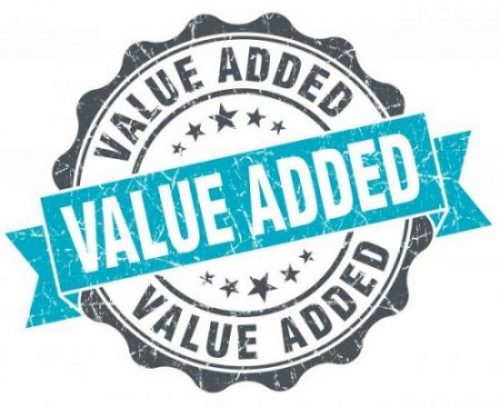My background as a project manager on military and civilian projects has given me a unique understanding of the similarities and differences in project management across industries. It has also shown me the benefits of a strong project management office (PMO). Having seen first-hand the impact an effective PMO can have, I’m sharing my project management best practices, so your team can excel and the overall business can thrive.
The Difference Between Project Management and a Project Management Office
Before we dive in, it is important to clarify the difference between project management (PM) and a project management office (PMO).
Project management is a plan of action put in place to facilitate specific project objectives. The project manager is an individual who is responsible for ensuring that all aspects of a project management plan stay on track. It is their job to lead the larger team of individuals from different departments who have a stake in delivering a successful project. This larger team is the project management office.
Many organizations launch projects without establishing the proper oversight. There are many tragic examples, probably within your organization, of projects that failed because there was no project manager or PMO in place, or the PMO lacked structure. Often, even when there is a PMO, their role is misunderstood and directives are loosely defined at best. They resemble that catch-all destination for things you’re keeping… because…, but might never use or at least won’t use effectively.
Essential Elements of Effective Project Management
Not all organizations need a project management office, but all projects do need a project manager. After the scope, schedule, and budget for the project are established, I’ve identified five essentials of project management and associated tools that are critical components of project management.
- Governance and Structure – Establishing effective governance early in a project is crucial for stakeholder management and communication
- Change Management Plan – Account for the fact that your project stakeholders may have diverse objectives and varying levels of responsibility for the success of a project.
- Project Management Plan – Outline the objectives, deadlines, milestones, activities, and resources required.
- Resource Plan – Acquire and schedule the team, tools, equipment, and processes you’ll need.
- Status Report or Dashboard – Provide an overview of project progress, risks, completed and upcoming milestones, and any obstacles.
Now, let’s explore each component in more detail.
1. Governance and Structure
Governance provides the framework for decision making and oversight. It can affect many areas including intake, finance, oversight of existing projects, resource management, technology and architecture, and process. Many of these areas will already have an individual governing them, so don’t try to introduce governance without considering those who may already be in place.
Establishing structure and governance early in the project lays the groundwork for effective stakeholder management and healthy communication. To prevent bottlenecks and unnecessary red tape, be sure to identify if there are areas where executive approval is not needed. This will help maximize project execution and minimize obstacles.
There are typically three levels of governance – delivery, execution, and executive – as demonstrated by the below image. Delivery involves a larger number of people including the project manager and owners of daily work being done. At the execution level are project directors and stakeholders. They are responsible for overseeing strategic direction and day-to-day performance. The leadership team and project sponsors make up the executive governance level and, as you might expect, oversee the project from an organizational perspective.

Depending on project or PMO requirements, the tools and templates used to document structure and governance could be presented in various formats with differing degrees of detail. For example, you could use a diagram showing the positions and relationships of individuals filling executive and management roles on the project, a roles and responsibilities matrix for key project stakeholders, and specific policies defining management principles or decision-making.
2. Change Management Plan
The stakeholders at various levels in the governance model may have different goals and accountability for project success. Considering that, it is likely their communication needs are also very different. That’s why two basic components of your change management plan should be a stakeholder management plan and a communication plan.
Though a change management plan can, and often should, be more robust, incorporating stakeholder and communication plans can provide a simple basis.
Stakeholder Management Plan
The goal of a Stakeholder Management Plan is to detail what each stakeholder needs to effectively engage them in the project. This is determined based on an analysis of needs, interests, and potential impact on project. Types of information included are, “What types and frequency of communication does each stakeholder need?”, “What does the project team need from the stakeholder?”, and “What engagement strategies would be most effective?”
Communication Plan
The structure of the Communication Plan is informed by the level and type of communication needed for each stakeholder. It documents everything from communication objectives and intended outcomes to the format for communications, owners, and status.
3. Project Management Plan
The Project Management Plan states how and when a project’s objectives are to be achieved. It provides a blueprint defining deadlines for deliverables, milestones, activities, and resources required.
The Project Manager creates the project plan in collaboration with the project team and key project stakeholders. The degree of detail and complexity may vary, but most project plans will contain the following basic elements:
- Work stream/Task identifiers/Associated deliverable
- Task
- Task Owner(s)
- Planned and Actual Start/Finish Dates
- May include status indicator for task completion
- May include Predecessors – indicator of task dependency relationships
4. Resource Plan
Most projects don’t have inexhaustible resources. The primary role of a project manager is to successfully execute projects within an organization’s resource constraints. This involves establishing a team with the skills required to perform the work as well as acquiring/scheduling tools, equipment, and processes.
Coordinating critical assets such as subject matter experts who may have limited availability is a key benefit of preparing a resource plan. Take, for example, a healthcare project that experiences an untimely and costly delay because no one scheduled the clinicians’ time in advance.
The resource plan is also presented to the project sponsors for approval. They use it to understand forecasted expenditures, coordination of team members, and tool utilization.
5. Status Report/Dashboard
The Status Report is a critical tool, particularly for those at the upper levels of the governance model. It should provide a snapshot of project progress with more detailed visibility into key areas.
The three major components to include in a project management status report are:
- Overall Project Health: forward-looking view of overall project risk, whether a project is on track, or at risk, and why
- Milestones: completed, in progress, and upcoming
- Complications: a brief overview of real or potential obstacles that may require intervention
Project Management Across Industries from My Unique Perspective
My project management experience began in an unconventional manner compared to most. I began my project management career in the military as a team leader for a Marine Corps Infantry Battalion. I was responsible for the welfare, training, and operation of my team of four Marines. During my time in service, I deployed several times to both combat and noncombat environments, ultimately serving as a squad leader responsible for 12 Marines. While these first years of my career were not a typical beginning for most project managers, I learned that many project management skills bridge the gap between civilian and military careers seamlessly. I also learned that, in other ways, there was a unique learning curve.
Not long after transitioning into the civilian sector of project management, I discovered that for all the soft skills that I had obtained in the military (teamwork, leadership, communication, etc.), I was sorely lacking in my understanding and use of the commonly applied project management tools.
I had stepped into the world of product development coupled with a company that was also consolidating numerous legacy products into a singular platform for their customer base. The scope of work required me to coordinate with all the business verticals (Marketing, Sales, Legal, Product, Support, and Services) who essentially made up their PMO for this product launch. It required a significant amount of on-the-job training to learn how to leverage the more traditional tools to which so many other PMs were already accustomed.
The development and deployment of this product was likened to “building a plane while in flight” due to the significant level of overlap between multiple feature releases and competing priorities within the company. For me, this project was a rewarding introduction to corporate project management. It forced me to double-down on learning the hard skills and tools of the project management trade. Integrating the tools with the soft skills I’d learned during my military career led to a successful product launch. Without a dedicated PM coordinating with the extended PMO, the project would almost certainly have failed.
Get Started on Your Project Management Office Setup
Every project, no matter how similar, requires a unique project management plan. Identifying a project manager who either works with stakeholders from various departments, as I did on my first civilian project, or within a defined PMO is imperative to realize the full potential of your project. By implementing these basic elements of a project management plan, you’ll be well on your way to architecting a successful outcome to your project.
At InfoWorks, a project management consulting firm in Nashville, I and other PMP-certified consultants help businesses with project management office setup. Reach out if you’re looking for support to implement project management office best practices or build a PMO at your organization.





